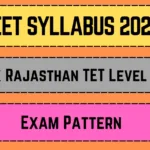Navigating the academic landscape requires a clear understanding of examination patterns, especially when aiming for success at institutions like Kashmir University. For students preparing for the 2025 examinations, being well-acquainted with the university’s exam structure is crucial. This article delves into the specifics of the exam pattern, marking schemes, and question types to provide a comprehensive guide for aspirants.
Key Highlights 📌
| Feature | Details |
|---|---|
| Institution Name | University of Kashmir |
| Exam Structure | Combination of internal assessments and end-semester exams |
| Question Paper Sections | – Section A: Short Answer Questions- Section B: Medium Answer Questions- Section C: Long Answer Questions |
| Marking Scheme | – Section A: 2 marks per question- Section B: 10 marks per question- Section C: 22 marks per question |
| Negative Marking | Applicable in entrance tests; 0.25 marks deducted per incorrect answer |
| Duration of Exams | Typically 2 hours |
| Credits System | – 4-credit courses: Maximum 100 marks- 2-credit courses: Maximum 50 marks |
| Implementation Framework | Aligned with the National Education Policy (NEP) 2020 |
| Official Website | www.kashmiruniversity.net |
Exam Structure and Sections 📝
Understanding the breakdown of the question paper is essential for effective preparation. Here’s how the exam is structured:
For 4-Credit Courses
- Maximum Marks: 100
- Minimum Passing Marks: 40
- Duration: 2 hours
Sections Overview:
| Section | Number of Questions | Marks per Question | Total Marks | Notes |
|---|---|---|---|---|
| A | 8 | 2 | 16 | Short Answer Questions |
| B | 4 | 10 | 40 | Medium Answer Questions with internal choice |
| C | 4 (attempt 2) | 22 | 44 | Long Answer Questions; students choose 2 out of 4 |
Source: Kashmir University New Question Paper Pattern
For 2-Credit Courses
- Maximum Marks: 50
- Minimum Passing Marks: 20
- Duration: 2 hours
Sections Overview:
| Section | Number of Questions | Marks per Question | Total Marks | Notes |
|---|---|---|---|---|
| A | 8 | 1 | 8 | Short Answer Questions |
| B | 4 | 5 | 20 | Medium Answer Questions with internal choice |
| C | 4 (attempt 2) | 11 | 22 | Long Answer Questions; students choose 2 out of 4 |
Source: Kashmir University New Question Paper Pattern
Marking Scheme and Negative Marking ⚖️
A critical aspect of exam preparation is understanding the marking scheme. For most courses:
- Internal Assessment: Constitutes 30-40% of the total marks, including assignments, quizzes, and presentations.
- End-Semester Exams: Account for 60-70% of the total marks.
For entrance examinations, negative marking is implemented:
- Deduction: 0.25 marks are subtracted for each incorrect answer.
Source: Kashmir University Admission 2025
Real-Life Examples and Expert Insights 🎓
To illustrate the practical application of understanding the exam pattern:
- Student Experience: A student from the 2024 batch emphasized the importance of familiarizing oneself with the question paper structure, stating it helped in time management during exams.
- Educator’s Perspective: A professor from Kashmir University highlighted that students who thoroughly understand the exam pattern tend to perform better, as they can strategize their answering techniques effectively.
Preparation Tips and Strategies 🧠
To excel in the exams:
- Understand the Syllabus: Thoroughly review the syllabus to identify key topics.
- Practice Previous Papers: Solving past question papers can provide insights into frequently asked questions and the exam’s difficulty level.
- Time Management: Allocate specific time slots for each section during preparation to ensure comprehensive coverage.
- Seek Clarifications: Don’t hesitate to approach professors or peers for any doubts or clarifications.
Conclusion
Grasping the exam pattern, marking scheme, and question types is pivotal for success at Kashmir University. By aligning preparation strategies with the outlined structure, students can approach their exams with confidence and achieve their academic goals.
Anjali Kapoor is a passionate writer specializing in exam results and notifications. With a degree in English Literature and 3+ years of experience, Anjali loves crafting engaging content for students. She enjoys painting and exploring art galleries.







